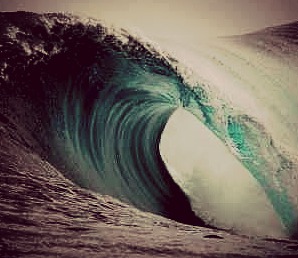Stomach Muscles and Acid Reflux
Various stomach muscles influence tomach muscles acid reflux and heartburn.
From the bodybuilder's six pack abs to smooth muscle tissue inside your stomach and esophagus.
Everybody Wants These Muscles...

... the six pack abs
A bodybuilder's rectus abdominis muscle is called a 'six pack'. Train yours and you'll get one yourself.
In fact, if you're a heartburn sufferer, it is a good idea to start training your abs!
A well developed muscular 'corset' gives your stomach a good support and keeps your organs in position.
Don't Train Stomach Muscles After Meal
It's not a good idea to train your abs immediately after meals. Abdominal contractions put pressure on a full stomach. Abs exercises on the mat put you in a horizontal position, just like your posture at night. Heartburn occurs more easily in a flat position, because gravity doesn't push your stomach content down.
Tips To Get A Flat Belly Without Heartburn
Wait
Wait at least 2 hours after a meal before starting a work-out. No time? Try lifting your knees while hanging on a bar. This is a powerful abdominal exercise that avoids the horizontal position of crunches.

Sugars And Fat
Stay away from fast sugars and fat in order to lose weight. Grab an apple instead of a twix and drink water. If you can get rid of your belly fat, your abs become more visible and the reduced amount of fat lowers pressure on your stomach. A lower stomach pressure reduces acid reflux.
Cardio
Include a cardio workout in your training schedule. Start running for example. Low intensity endurance training is ideal to burn belly fat.
Smooth Muscles Differ From Six Pack Abs
Your (future?) six pack abs are not your only stomach muscles. Inside your digestive tract, you have another type of stomach muscle tissue, called 'smooth muscle'.
Smooth Abdominal Muscle
A chain of smooth muscles brings food to your stomach, digests it and removes what's left of it.
Your autonomic nervous system drives your smooth muscles and works beyond your will. Smooth muscles can't be trained, nor controlled.
Muscle Contraction During Digestion
Smooth muscles in the lining of your stomach contract during digestion.
They mix your food with hydrochloric acid and digestive enzymes. Foods can stay in your stomach up to eight hours before they move further to your bowel.
When you go to the toilet, smooth muscles inside your bowel perform a 'peristaltic wave' to push out the remains of your digestion.

Food Pipe Muscles
Did you know that you can still swallow food hanging upside down?
That's because strong circular smooth muscles in the lining of your food pipe work together to push food along your food pipe.
As soon as food or water reaches the back of tongue, a swallow reflex triggers a chain of muscles inside your esophagus. A wave of muscle contractions moves every bite of food towards your stomach. This chain of smooth muscle contractions is called a 'peristaltic wave'.
Stomach Valve
Your lower esophageal sphincter acts as a one way pass. A tight muscle that allows food to enter your stomach and prevents stomach content to move back out.
Stomach pressure rises during digestion. Heartburn takes place when your lower esophageal sphincter is too weak to withstand this pressure.
from stomach muscles to exreflux.com
Copyright © 2012 - 2019 exreflux.com.